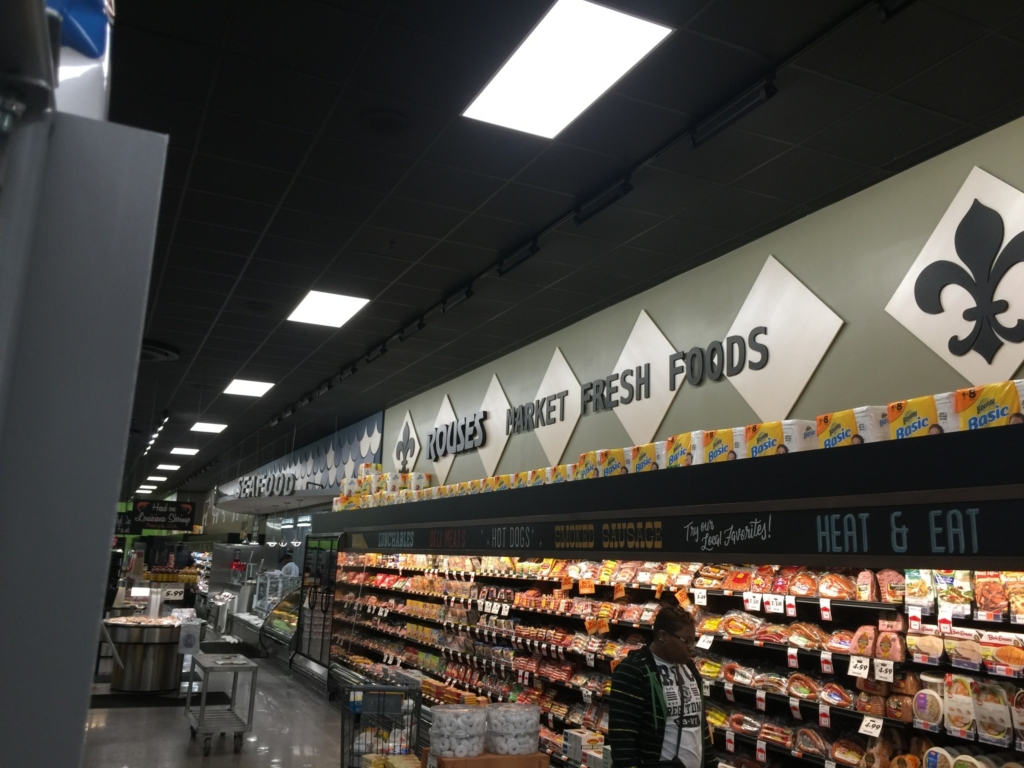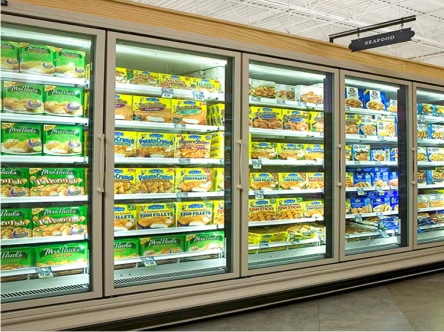Supermarkets are no longer just places to buy groceries; they are now experiential spaces where customers engage with a multitude of different types of products, make purchasing decisions, and form impressions. Supermarket lighting design plays a crucial role in creating a visually appealing and functional environment that enhances the overall shopping experience. This supermarket lighting design guide will provide valuable insights into design concepts, factors to consider, types of fixtures to use, design strategies, best practices, and inspiring examples.
The Importance of Supermarket Lighting Design
Effective lighting design is a fundamental aspect of successful supermarket environments. Beyond simply illuminating the space, lighting sets the mood, enhances the visibility and attractiveness of products, and influences customer behavior. By creating a warm and welcoming atmosphere, supermarkets can encourage customers to spend more time exploring aisles and engaging with merchandise. Additionally, well-designed lighting can contribute to a sense of comfort and security, making customers feel at ease during their shopping experience.
Factors to Consider When Designing Supermarket Lighting
Energy efficiency and sustainability are important considerations, as supermarkets are high-energy consumption environments. Implementing energy-efficient lighting solutions not only helps reduce operating costs but also aligns with environmental sustainability goals. LED lights have become the standard for virtually all lighting needs due to their energy efficiency and longevity.
- Flexibility and adaptability are crucial to accommodate different store areas, such as aisles, checkout counters, produce sections, and specialty displays, as well as multi-purpose stores that have coffee shops, nail salons, etc.
- Color rendering and temperature play a significant role in creating a visually appealing environment and accurately showcasing product colors.
- Light intensity and uniformity ensure consistent lighting levels throughout the store, preventing areas from appearing dim or overly bright.
- Lastly, maintenance and cost considerations are important factors to ensure the long-term sustainability of the lighting system.
Types of Supermarket Lighting
Supermarkets employ a variety of lighting fixtures to achieve their desired lighting effects. Ambient lighting, often provided by ceiling-mounted fixtures such as pendant lights and downlights, provides general illumination throughout the store. Task lighting, such as under-shelf or under-cabinet fixtures, is used to enhance visibility in specific areas where customers interact with products, such as deli counters or bakery sections.
Accent lighting is strategically placed to highlight specific products or displays, drawing attention and creating visual interest. Display lighting is employed to enhance the presentation of high-value or promotional items, using adjustable spotlights or track lighting. Lastly, signage lighting ensures that signage and promotional materials are clearly visible, aiding customers in finding their desired products or navigating the store.
Design Strategies for Supermarket Lighting
To create a visually attractive and functional environment, various supermarket lighting design strategies can be employed. A layered lighting approach, combining ambient, task, and accent lighting, allows for different lighting levels and focal points, creating depth and visual interest. Zoning and sectioning techniques involve dividing the store into distinct areas and applying lighting techniques accordingly, tailoring the lighting to suit each section’s specific purpose and atmosphere.
Incorporating natural light sources, such as skylights or windows, can introduce a sense of openness and connection to the outdoors. Dynamic lighting options, such as tunable white lighting or programmable LED systems, enable supermarkets to adjust lighting based on the time of day, seasons, or special events. Additionally, lighting control systems and automation provide centralized control and scheduling, further optimizing energy usage and convenience.
Best Practices in Supermarket Lighting Design
Adhering to industry best practices ensures that the supermarket lighting design is effective and efficient. Balancing brightness and minimizing glare are essential to provide a comfortable shopping experience. Careful consideration should be given to selecting appropriate lighting colors that enhance the appearance of products. For example, factors such as color temperature and color rendering index (CRI) play a role. Proper lighting for fresh produce and perishable goods is crucial to maintain their visual appeal and quality, often achieved through a combination of lighting fixtures and color-enhancing technologies.
Safety concerns should be addressed by ensuring adequate security lighting levels in parking lots, entrances, and high-traffic areas. Lastly, supermarkets can incorporate sustainability measures, such as LED lighting, motion sensors such as the Solais ZT4, and daylight harvesting, to reduce energy consumption and minimize environmental impact.
Examples of Attractive Supermarket Lighting Design
To inspire supermarket owners and designers, this section showcases a range of examples highlighting successful implementations of supermarket lighting design.

Notice the variety of lighting fixtures in this photo; this section of the store was layered with lay-in, track, accent, and cooler lights. This adds visual interest as well as ensures everything is well-lit. The lighting on the meat accurately represents the natural color of the products, making it more appealing.

The lighting in the refrigerated section is on the cooler side, and the brightness makes the colors of the packaging stand out. It’s important to choose lighting made specifically for coolers, as their heat output is minimal and they can handle moisture.

Again, notice the variety of lighting fixtures here. The deli section employs different lighting than the rest of the store with its pendant lights, creating an ambiance that sections itself off and differentiates itself from the rest of the space.
Solais’s Supermarket Lighting Design Can Help You Improve Sales
Supermarket lighting design plays a significant role in shaping the overall shopping experience. By considering factors such as energy efficiency, adaptability, color rendering, maintenance, and cost, supermarkets can create appealing and inviting spaces that enhance customer engagement.
Consult with Solais for guidance in selecting the right lighting products and implementing a well-designed lighting system tailored to the unique needs of each supermarket.
